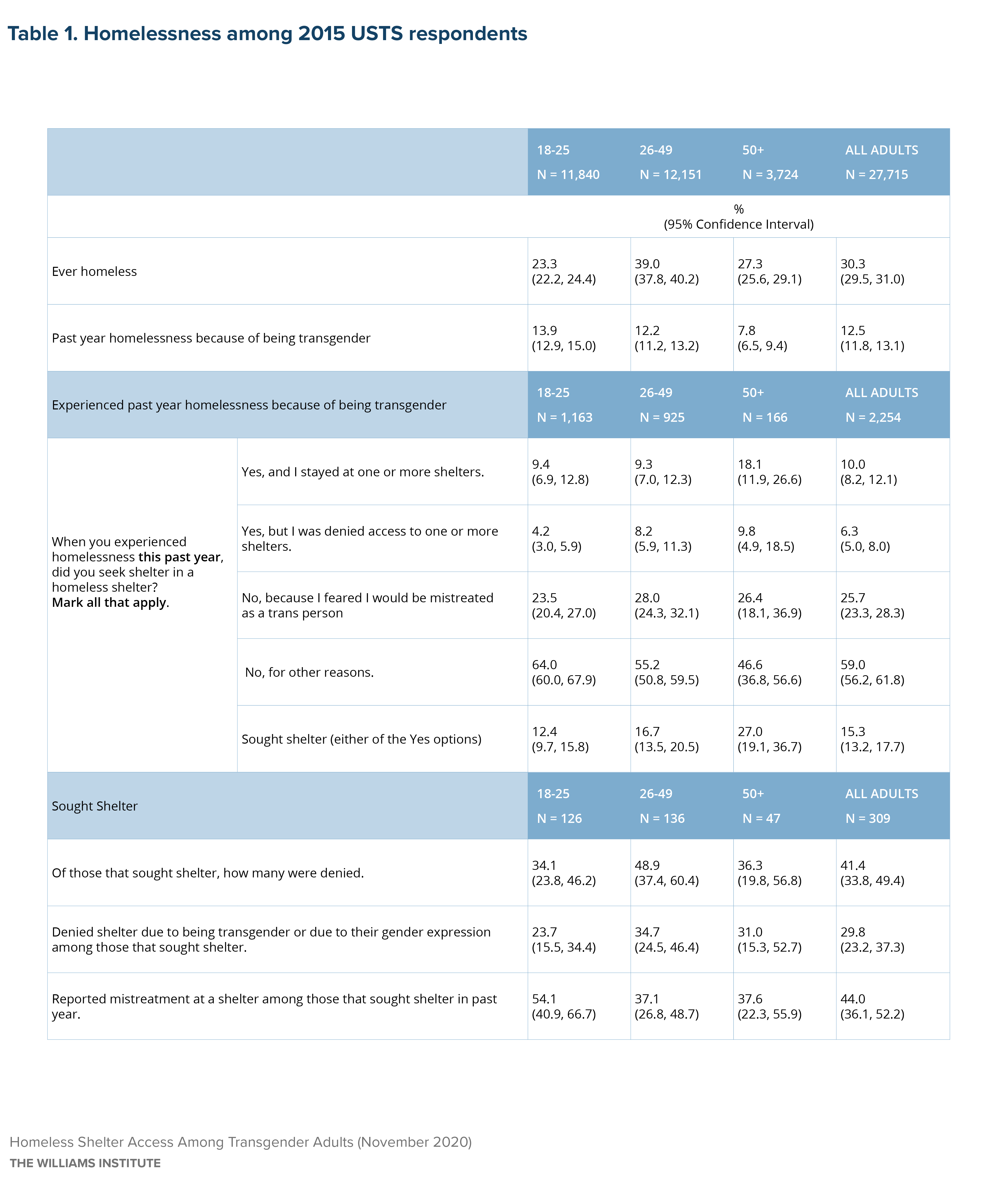Emergency shelters (aka, homeless shelters) are a key component to the homelessness crisis response system. While research has found that transgender people are overrepresented among those who are unstably housed in the U.S., data are scarce regarding transgender people’s experiences with the programs designed to reduce or alleviate the impact of homelessness. Further, the dominant policy discussion on LGBT homelessness has historically focused on youth, leaving less known about homelessness among transgender adults across the age spectrum.
Results from the 2015 U.S. Transgender Survey (USTS) indicate that many transgender adults who experience homelessness face barriers when accessing shelters. Respondents were grouped by age: 18-25 years, 26-49 years, and ages 50+.
- 30% of the study participants reported that they have experienced homelessness at some point in their lifetime. Homelessness includes staying in a shelter, living on the street, living out of a car, or staying temporarily with family or friends because one cannot afford housing.
- Adults aged 26-49 reported significantly higher rates of lifetime homelessness than either younger or older adults.
- 12.5% of the respondents in this study reported experiencing homelessness in the past year because they are transgender.
- Respondents over 50 were significantly less likely to have experienced recent homelessness than the two younger groups of adults in the study. Young adults aged 18-25 and adults aged 26-49 years did not report significantly different experiences of recent homelessness.
- 15.3% of those who experienced homelessness due to their transgender status in the past year sought shelter at a homeless shelter. Just under 85% did not seek shelter at a homeless shelter due to fear of mistreatment or other reasons.
- 25.7% of those who experienced homelessness due to their transgender status in the past year did not seek shelter because they feared they would be mistreated as a transgender person.
- Of those who sought shelter,
- 41.4% were denied access to one or more shelters.
- Almost 30% reported being denied shelter due to being transgender or due to their gender expression.
- 44% experienced some form of mistreatment at a shelter, including harassment, assault, or requirements to dress or present as the wrong gender in the shelter.
Similar to a population-based study of LGBT adults, this study indicates that transgender adults experience recent and lifetime homelessness at high rates. While transgender people over the age of 50 years were least likely to experience recent homelessness compared to younger adults, the percentage reported in this sample was still concerning; further, it is notable that adults ages 26-49 years reported recent homelessness as often as the youngest adults, indicating a trajectory of persistent homelessness for transgender people.
The findings show that significant numbers of transgender adults do not have adequate access to emergency housing services. The U.S. Department of Housing and Urban Development recently proposed an administrative rule that would roll back protections against gender identity discrimination in homeless shelters and other HUD-funded facilities. If finalized, this rule could make it more difficult for transgender people experiencing homelessness to access shelters, exacerbating existing reports of mistreatment and discrimination.
